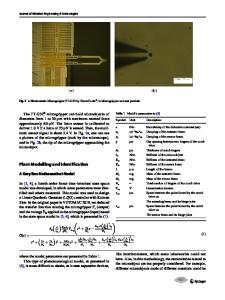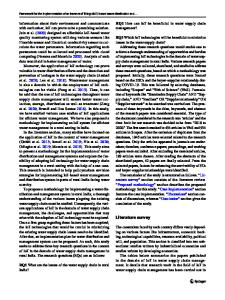An energy-efficient load distribution framework for SDN controllers
- PDF / 1,160,321 Bytes
- 26 Pages / 439.37 x 666.142 pts Page_size
- 57 Downloads / 334 Views
An energy-efficient load distribution framework for SDN controllers Madhukrishna Priyadarsini1 · Shailesh Kumar1 · Padmalochan Bera1 · Mohammad Ashiqur Rahman2 Received: 16 March 2019 / Accepted: 17 August 2019 © Springer-Verlag GmbH Austria, part of Springer Nature 2019
Abstract Software-defined networking (SDN) has evolved as an effective platform for future Internet due to its capability of configuring the network dynamically with varying requirements. It has been observed that the load and energy requirement of SDN devices increase significantly with the growth of communication networks. Therefore, there is a need for efficient modeling of SDN controller that can balance the load as well as optimize the energy consumption by the devices. In this paper, we present an energy-efficient load distribution framework; controller system model for efficient load distribution and routing of traffic that objectively optimize the energy consumption in the network. Our model balances load according to the heterogeneous traffic demands as well as reduces energy consumption by introducing energy-efficient routing algorithm selection procedure. The load balancing scheme is drifted by switch migration technique for multiple controllers simultaneously, whereas the novelty of energy-efficient routing lies on sleep and active mode of network devices. We present interaction between load-balancing scheme and energy-efficient routing towards the network’s performance enhancement. The efficacy of our proposed controller system model is justified with extensive simulation results that show approximately 25% reduction of energy consumption and approximately 20% performance increment. Our proposed model is applicable to real-life network environment satisfying the standards of green communication. Keywords OpenFlow · Controller · Load distribution · Energy efficiency · Performance Mathematics Subject Classification 68M10
B
Madhukrishna Priyadarsini [email protected]
Extended author information available on the last page of the article
123
M. Priyadarsini et al.
1 Introduction The large-scale digitization of data and the growth of the Internet in various applications of enterprise domains, call significant changes in the communication technologies and network platforms [1]. Software-defined networking (SDN) is an emerging platform, unlike the traditional network, effectively manages heterogeneous traffic depending on changes in requirements [2]. 1.1 SDN overview One of the important aspects of SDN is that it provides a structured software environment for evolving network-wide abstractions while potentially making the data plane simple [3,4]. In SDN, a logically centralized control plane functionally manages the network and abstracts the underlying network infrastructure to the applications [5]. SDN controller communicates with the application layer using the northbound protocol to implement the application-level requirements, and southbound protocols generate the flow tables [6,7]. Then the generated flow tables are assigned to th
Data Loading...











